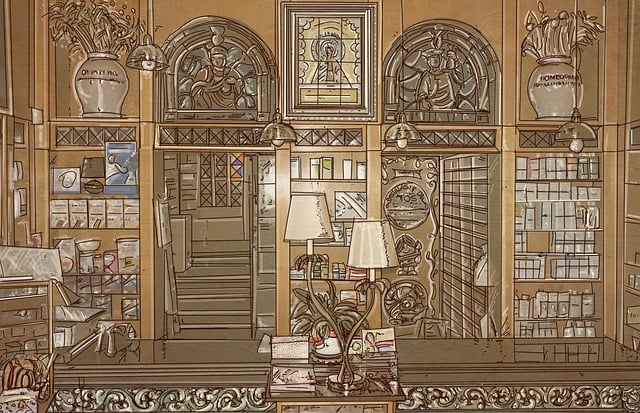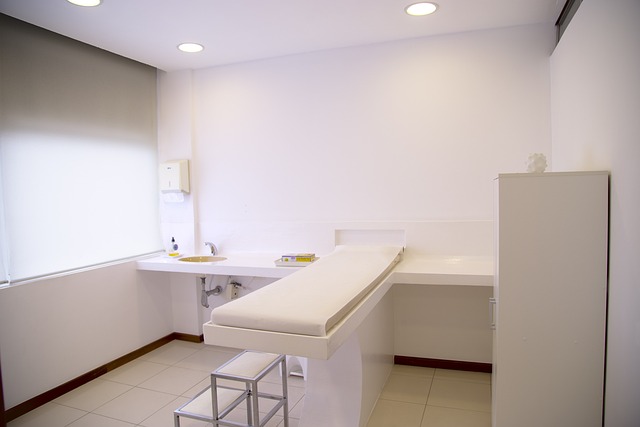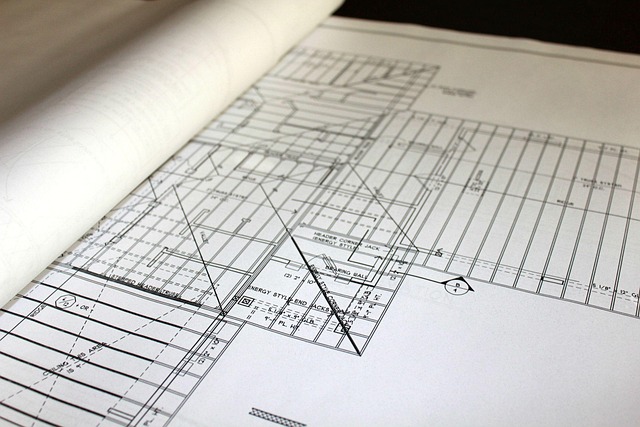CoolSculpting is a non-invasive fat reduction method using cryolipolysis technology to target and eliminate stubborn fat cells in specific areas like the abdomen, love handles, flanks, arms, and calves without impacting surrounding tissues or muscle. Suitable candidates are determined through initial consultations where professionals assess medical history, current health, treatment goals, and fat thickness. Personalized CoolSculpting Treatment Plans are created to maximize results and minimize side effects, which may include redness or swelling. Results become noticeable 3-6 months post-treatment, with improved body shape and reduced fat layers. Proper post-care is crucial for achieving and maintaining long-lasting outcomes under these plans.
Looking to achieve sculpted, contoured body shapes without surgery? CoolSculpting offers a revolutionary non-invasive fat reduction solution. This article delves into comprehensive CoolSculpting treatment plans, guiding you through every step from understanding the procedure to personalized planning and post-procedure care. Discover how science-backed technology works its magic, explore potential benefits, risks, and side effects, and learn about maintenance for long-lasting results.
Understanding CoolSculpting: A Non-Invasive Fat Reduction Technique

CoolSculpting is a revolutionary, non-invasive fat reduction technique that has gained significant popularity in recent years as part of various CoolSculpting treatment plans. This procedure leverages advanced cryolipolysis technology to target and eliminate stubborn fat cells, offering a safe and effective alternative to surgical procedures. By chilling fat cells to temperatures below -5 degrees Celsius, CoolSculpting causes them to crystalize and eventually die off, leading to noticeable reductions in localized fat deposits without impacting surrounding tissues or muscle.
Unlike traditional dieting and exercise, which may struggle to target specific problem areas, CoolSculpting is designed to treat specific regions such as the abdomen, love handles, flanks, arms, and calves. The non-invasive nature of the treatment means there’s minimal downtime, making it an appealing option for individuals seeking fat reduction without surgery or prolonged recovery periods. As part of a comprehensive CoolSculpting treatment plan, multiple sessions may be required to achieve optimal results, depending on the severity of the condition and the patient’s unique goals.
Determining Candidate Suitability for CoolSculpting Treatment Plans

Determining candidate suitability for CoolSculpting treatment plans is a crucial step in ensuring optimal results and patient satisfaction. This non-invasive fat reduction procedure is ideal for individuals committed to achieving their desired body goals through lifestyle changes and who have specific areas of concern, such as love handles, belly fat, or outer thigh fat. It’s essential to understand that CoolSculpting isn’t suitable for everyone, as individual results may vary based on factors like skin type, body composition, and adherence to post-treatment instructions.
During the initial consultation, our trained professionals assess each patient’s medical history, current health status, and treatment goals. We carefully evaluate areas intended for treatment to determine fat thickness and suitability for freezing. By combining this information with a discussion about lifestyle and expectations, we tailor CoolSculpting treatment plans to meet individual needs, maximising results and minimising potential side effects.
The Science Behind CoolSculpting: How Does It Work?

CoolSculpting is a non-invasive body contouring treatment that uses cryolipolysis to target and eliminate stubborn fat cells. The science behind CoolSculpting involves advanced technology that freezes and destroys fat cells without damaging surrounding tissue or skin. During the procedure, a cooling device is applied to specific areas of the body, causing the fat cells to crystallize and eventually die. Over time, these dead fat cells are naturally eliminated from the body through metabolic processes.
This innovative approach allows for targeted fat reduction in problem areas like the abdomen, flanks, thighs, and arms. Unlike traditional liposuction, CoolSculpting offers a non-surgical alternative that can provide similar results. The treatment plans typically involve multiple sessions, with each session focusing on specific areas to ensure optimal and safe fat reduction. This method is well-regarded for its minimal downtime and consistent outcomes, making it a popular choice among those seeking body contouring solutions as part of their CoolSculpting treatment plans.
Designing a Personalized CoolSculpting Treatment Plan

CoolSculpting, a non-invasive fat reduction treatment, offers personalized plans to suit individual needs. The initial step involves a comprehensive consultation where a trained specialist assesses your body composition and identifies areas of concern. This detailed evaluation ensures the treatment plan aligns with your specific goals.
During this process, various factors are considered, such as skin thickness, muscle mass, and fat distribution. The specialist will determine the ideal applicator choices for your CoolSculpting session, focusing on targeted areas like the abdomen, flanks, or thighs. This tailored approach maximizes results while minimizing discomfort, making it a popular choice for those seeking effective, personalized fat reduction.
What to Expect During and After the CoolSculpting Procedure

During your CoolSculpting treatment, you can expect a comfortable and non-invasive experience. The procedure involves the application of controlled cooling technology to target and freeze specific fat cells. You’ll remain awake throughout, with minimal discomfort reported. The cooled applicators are placed on the desired areas, and over time, the targeted fat cells will crystallize and begin to die. This process is safe and effective, as it only affects the fat cells while leaving surrounding tissues unharmed.
After the CoolSculpting procedure, you may experience some redness or mild swelling in the treated areas, but these typically subside within a few days. Results are gradual, with most patients noticing a noticeable difference in their body shape about 3-6 months after treatment. As your body naturally processes and eliminates the damaged fat cells, you’ll see a reduction in fat layers, leading to improved contouring and a slimmer appearance. Remember, maintaining a healthy lifestyle with regular exercise and a balanced diet is key to enhancing and preserving your CoolSculpting results.
Potential Benefits, Risks, and Side Effects of CoolSculpting

CoolSculpting offers a non-invasive fat reduction solution, potentially helping individuals achieve their desired body shape. One of its key benefits is the targeted elimination of stubborn fat areas, providing a long-lasting result. This treatment can be particularly effective for reducing fat on the abdomen, flanks, and thighs. By freezing fat cells, CoolSculpting may also lead to a noticeable improvement in skin texture and tone, leaving patients with a more contoured silhouette.
However, like any procedure, it is not without risks or side effects. Common temporary reactions include numbness, swelling, and bruising at the treatment site. In rare cases, patients might experience discomfort or pain that can be managed with over-the-counter medications. It’s essential to remember that results may vary from person to person, and multiple sessions could be necessary for optimal outcomes. Patients should also be aware of potential contraindications, such as certain medical conditions or taking specific medications, which might make the procedure unsuitable.
Maintenance and Follow-Up Care for Long-Lasting Results

After your CoolSculpting treatment, maintaining and following up with proper care is crucial for achieving and preserving long-lasting results. This includes adhering to post-treatment guidelines provided by your healthcare professional, such as avoiding strenuous activities or extreme temperatures for a few days. Regular check-ins with your provider are also essential to monitor progress and address any concerns promptly.
Follow-up sessions may be recommended to ensure optimal outcomes, as these appointments allow providers to assess the effectiveness of treatment and identify areas that might require additional attention. Staying consistent with care routines and attending follow-ups ensures not only desired results but also helps in managing expectations and addressing any potential challenges that may arise.
